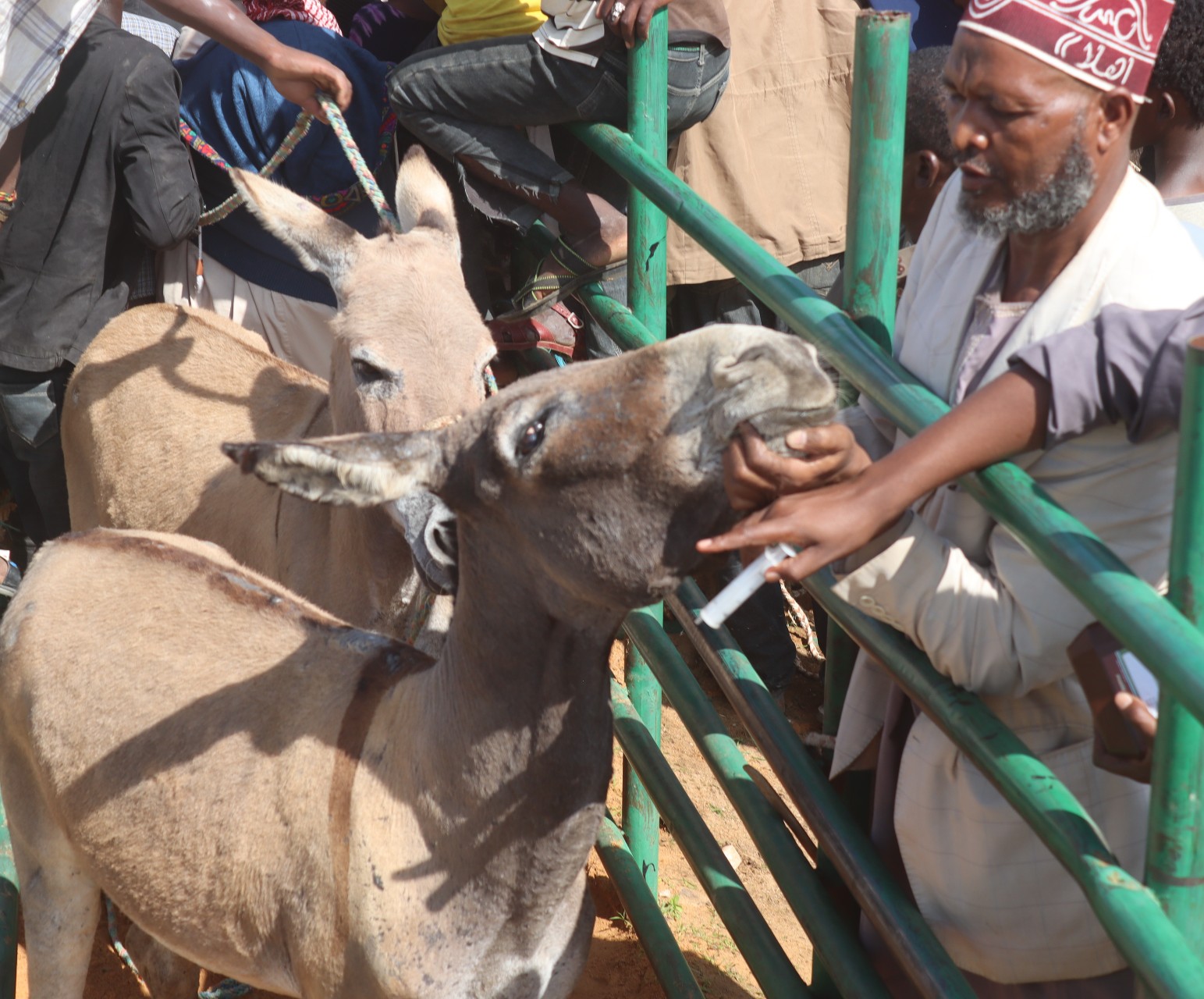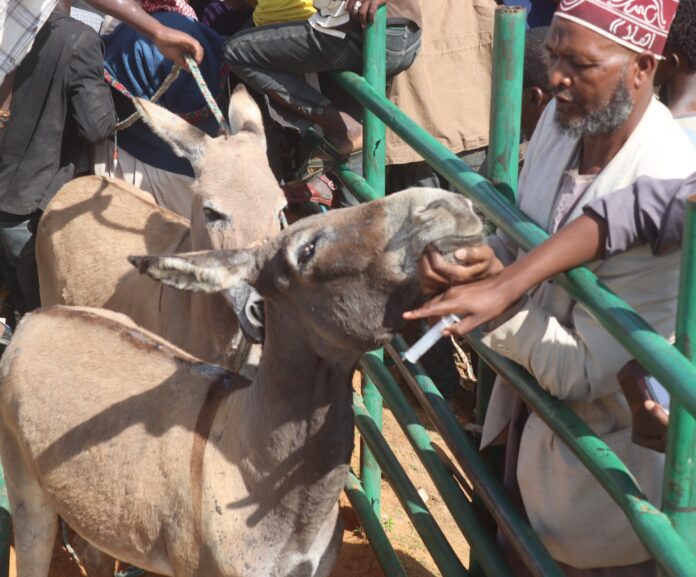By Lenah Bosibori
Marsabit County, Kenya: In the huge arid and semi-arid landscape of Marsabit County, donkeys are an essential part of everyday life; they are used for the transportation of goods and water and are a crucial source of income for many families, others use them as dowry. However, for Hawo Huka, these hardworking animals have been much more than just beasts of burden
Huka currently has three donkeys and lost others to Ethiopia in the last four years when donkeys were being slaughtered for export leaving her and her family struggling to make ends meet
“I lost my donkeys some years back to Ethiopia because I am at the border, at the border donkeys were very cheap when Kenya used to slaughter them for export,” says Huka.
In April 2016 Kenya opened its first donkey slaughterhouse in Mogotio in Baringo County followed by Star brilliant in Nakuru County in September 2016, Silzha Limited in Turkana County was the third in March 2017, and Kithyoko in Machakos County in November 2018.
Speaking to journalists in Marsabit County during a media stakeholder and consultative workshop on donkey cross-border movement and trade organized by Africa Network for Animal Welfare (ANAW), Huka urged the government not to reopen the donkey slaughterhouses as they will increase the theft of donkeys
It was estimated that around 1200 donkeys were slaughtered daily when the slaughterhouses were still in operation.
In February 2020 the then-minister for Agriculture, Livestock, Fisheries, and Cooperatives Peter Munya banned the abattoirs in the country. According to Munya, the ban came against the conditions of diminishing donkey numbers due to the uncontrolled theft of donkeys in a syndicate that was meant to benefit slaughterhouse owners at the expense of citizens like Huka.
According to Hasan Guyo, Moyale sub-county veterinary officer, the number of donkeys in Marsabit County has slightly increased and cross-border trade has also gone down.
“The number has increased though not big because it takes three years for them to multiply, at least it is not like recent years when they were all stolen,” adds Guyo.
Huka representing women as the treasurer of the Donkey Welfare Group urged donors to help the widows purchase more donkeys to help them carry out their daily activities easily.
On his part, Josiah Ojwang the acting Executive Director ANAW said that the use of African donkeys has dramatically changed in the last four years
“We have kept our donkeys for different uses even in very urban areas we see people moving houses with them because pickups are expensive, transporting farm produce in places not accessible by vehicles, transporting people to hospital because there are shortages of ambulances others use them for plowing alongside oxen.

Despite all the massive benefits, donkeys are largely neglected and not taken seriously as other domestic animals. “We have lost donkeys due to hunger because they move to the capital to look for food in the streets and get knocked down by vehicles, “adds Ojwang.
According to Ojwang, from 2016 to 2019, the population of donkeys had dramatically decreased from 1.8 million to 1.1 million, around 700,000 donkeys had been slaughtered and their interest was only the skin.
“They were interested in their skin because their skin was sold very expensively to Chinese to make traditional Chinese medicine, it is interesting that at the peak, one skin of a donkey was selling between kshs18, 000 to 25,000 much more expensive than even a donkey, adds Ojwang
He adds that many donkeys have also been slaughtered during this drought season mostly in the months of February and March,
Salad Shamo the secretary general donkey welfare group called on the locals to look at the welfare of the donkeys by giving them water and food as they do to other domestic livestock like cows, goats, and sheep.
According to the 2009 Kenya Population and Housing Census, the donkey population was 1.8 million, and Moyale sub-County has 30,000
Challenges Facing Donkeys in Marsabit County
According to Guyo, there have been a lot of challenges that donkeys have undergone ranging from prolonged drought, lack of medication, negligence, and overload when they are transporting goods.
“Marsabit County experienced about five consecutive rain failures and therefore we happened to lose around 8,000 donkeys to drought-related causes,” adds Guyo.
He adds that recently it rained in the Southern parts of Ethiopia and there were cases of flush floods which led to losing 78 donkeys.
Dr. Dennis Bahati from ANAW says that Kenya is still far from achieving a total ban on donkeys, the reason they keep sensitizing the media every year is to build their capacity so that they change the mindset of the people.
Despite these challenges, the economic value of these donkeys cannot be underrated, they are contributing to the livelihood for the pastoral communities in a greater way like poverty reduction among the pastoral community living in Moyale and the vulnerable population of the area.
Donkey slaughterhouses
The dynamics of donkeys in Kenya changed dramatically with the setting up of the fast slaughterhouse in 2016, according to Guyo, during this period the area used to transport between 10-15 trailers of donkeys estimated at about 10,000 -15 000 donkeys per month.
These slaughterhouses were basically set up by Chinese investors of various names, and the reason why they set them up was to slaughter donkeys for export, reports show that 1200 were slaughtered daily at the abattoirs.
Rescue efforts
Guyo says that the government has pledged to collaborate with donkey owners to improve the welfare of donkeys. This includes supporting clinics, reporting diseases, restricting border movements to prevent smuggling, enhancing surveillance, training users and utilizing technology, supporting research, conducting headcount, and preventing thefts.
“Donkeys are victims of rabies disease, as government, we want to ensure that all livestock diseases are reported including donkeys diseases. There is a need to enhance a surveillance system for the entire livestock species and to train those people hired to fetch water from water points on proper harnessing techniques to stop cases of overload,” adds Guyo
Guyo reiterates that when the donkey population goes down, the communities that use them are definitely affected. “When the prices went up, women who were most affected were not able to afford them,” adds Guyo.














